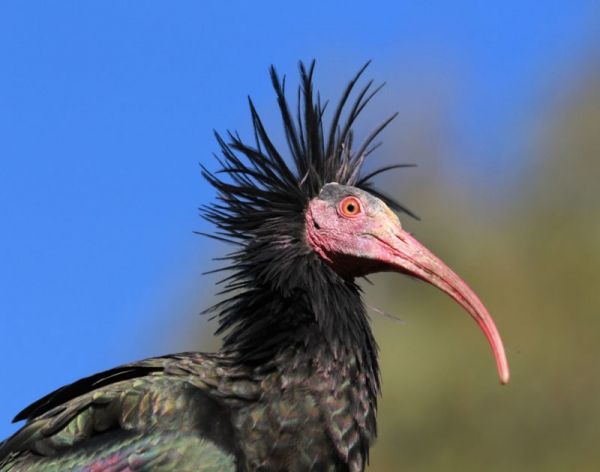With its black body and wide wings, the bird flying along Austria’s Salzach Valley on a mild summer day looks, at first glance, a lot like a crow. But when it lands in a nearby meadow, it quickly becomes clear that this is a very different animal.
The bird’s iridescent feathers give it an almost magical appearance. Its long, curved beak enables it to hunt for small animals, and its naked head, with feathers that point straight into the air, Mohawk-style, make it look like no other bird in Europe.
This particular bird even has a name: Liethe. It is a waldrapp, or northern bald ibis, a species that is critically endangered in the wild. In former centuries, the species occurred widely in northern and eastern Africa, Asia Minor, Arabia, and parts of Europe. The ancient Egyptians revered the northern bald ibis as an afterworld divinity, and its likeness can clearly be seen in hieroglyphs dating back thousands of years.
Today, however, all that’s left of the northern bald ibis is a small population of around 600 wild birds in Morocco, a semi-wild population — dependent on captive breeding — of about 200 individuals in southern Turkey, and perhaps a few individuals in East Africa. A tiny remnant population in Syria, numbering seven individuals, was discovered in 2002. But that population dwindled to a single bird in 2014, and an expert on the northern bald ibis in the Middle East says the bird is now extinct in Syria, with the civil war acting as “the classic straw that broke the camel’s back.”
Read more at Yale Environment 360
Image: As a waldrapp matures, the unfeathered areas of it head and neck turn from grey to red. (WALDRAPPTEAM / LIFE NORTHERN BALD IBIS)


